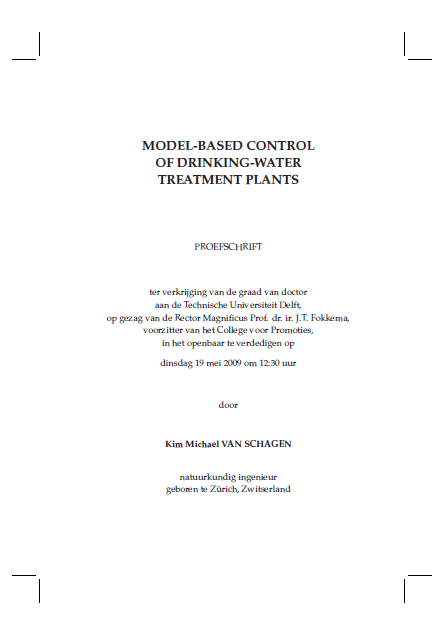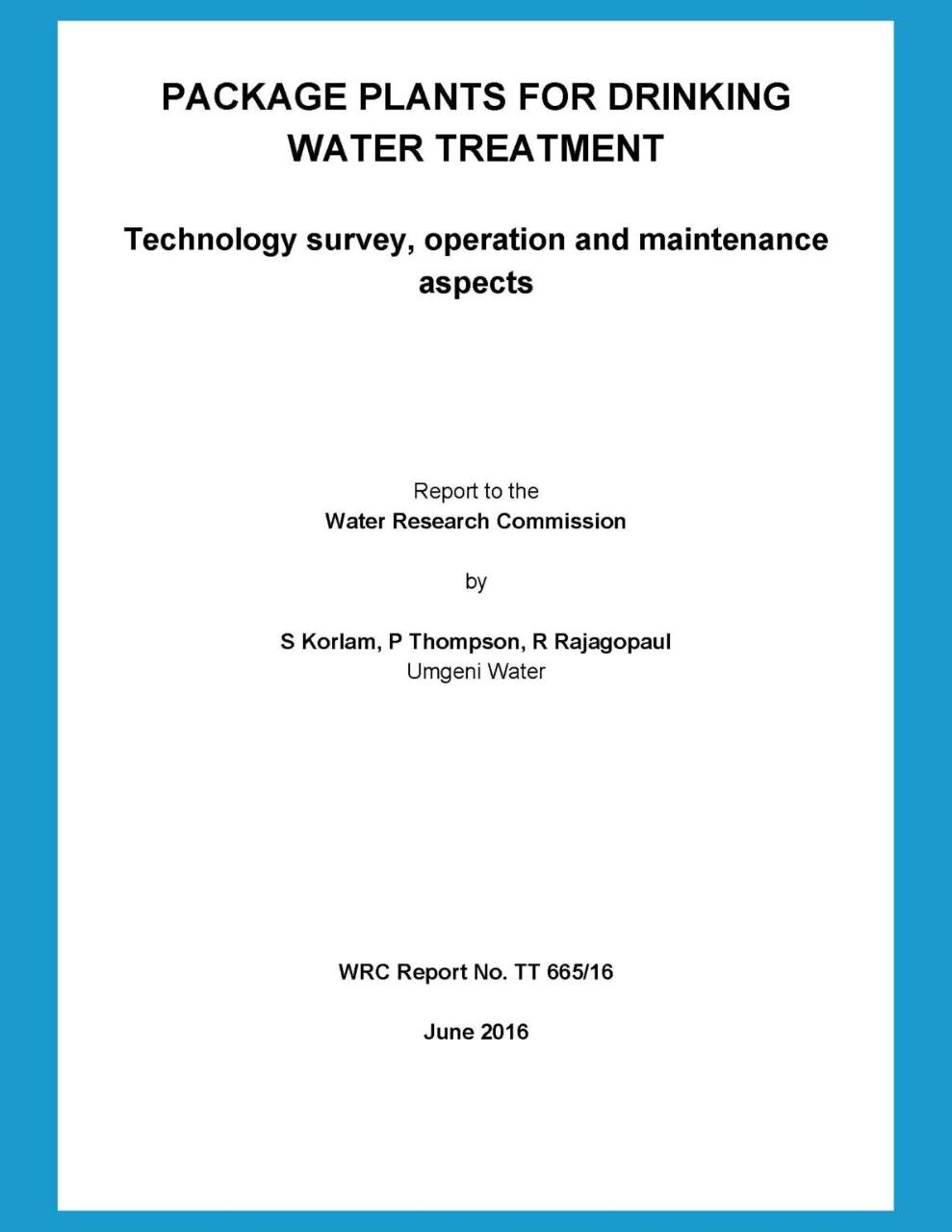Model-Based Control Of Drinking-Water Treatment Plants
Model-Based Control of Drinking-Water Treatment Plants
Source :https://www.tudelft.nl/
Author : Kim Michael VAN SCHAGEN
Introduction
The drinking water in the Netherlands is of high quality and the production cost is low. This is the result of extensive research in the past decades to innovate and optimise the treatment processes. The processes are monitored and operated by motivated and skilled operators and process technologists, which leads to an operator-dependent, subjective, variable and possibly suboptimal operation of the treatment plants. Furthermore, the extensive automation of the treatment plants reduces the possible operator attention to the individual process units. The use of mathematical process models might solve these problems. This thesis focuses on the application of models in model-based monitoring, optimisation and control of drinking-water treatment plants, with the Weesperkarspel treatment plant ofWaternet as a case study.
Only logged in customers who have purchased this product may leave a review.
Related products
An Energy-Efficient and Sustainable, Microbial Electrolysis- Deionization System for Salt and Organics Removal
An Energy-Efficient and Sustainable, Microbial Electrolysis- Deionization System for Salt and Organics Removal
Aerogel & Iron-Oxide Impregnated Granular Activated Carbon Media For Arsenic Removal
Aerogel & Iron-Oxide Impregnated Granular Activated Carbon Media For Arsenic Removal
Biological Processes Nitrogen & Phosphorus
Biological Processes Nitrogen & Phosphorus
Inorganic Contaminant Removal
- Inorganic contaminant treatment selection considerations
- Advanced inorganic contaminant removal chemistry terminology
- Advanced inorganic contaminant removal chemistry explanations
- Conventional filtration and how it relates to inorganic removal
- Detailed information on treatments for iron and manganese removal
- Detailed information on treatments for hardness removal
- Detailed information on inorganic contaminant monitoring protocols
- Detailed tables on the following topics:
- Sources of 26 inorganic contaminants
- Common secondary standards with effects, inorganic contributors and indications
- Various treatment technology options to consider for 24 inorganic contaminants
- Potential forms of iron and manganese
- Iron and manganese sampling procedures
- Iron and manganese oxidant selection criteria
- Iron and manganese theoretical (initial) dosing criteria
- Potential treatments for less common inorganics
- Potential treatments for miscellaneous trace metals
Inorganic Contaminant Removal
- Inorganic contaminant treatment selection considerations
- Advanced inorganic contaminant removal chemistry terminology
- Advanced inorganic contaminant removal chemistry explanations
- Conventional filtration and how it relates to inorganic removal
- Detailed information on treatments for iron and manganese removal
- Detailed information on treatments for hardness removal
- Detailed information on inorganic contaminant monitoring protocols
- Detailed tables on the following topics:
- Sources of 26 inorganic contaminants
- Common secondary standards with effects, inorganic contributors and indications
- Various treatment technology options to consider for 24 inorganic contaminants
- Potential forms of iron and manganese
- Iron and manganese sampling procedures
- Iron and manganese oxidant selection criteria
- Iron and manganese theoretical (initial) dosing criteria
- Potential treatments for less common inorganics
- Potential treatments for miscellaneous trace metals















Reviews
There are no reviews yet.